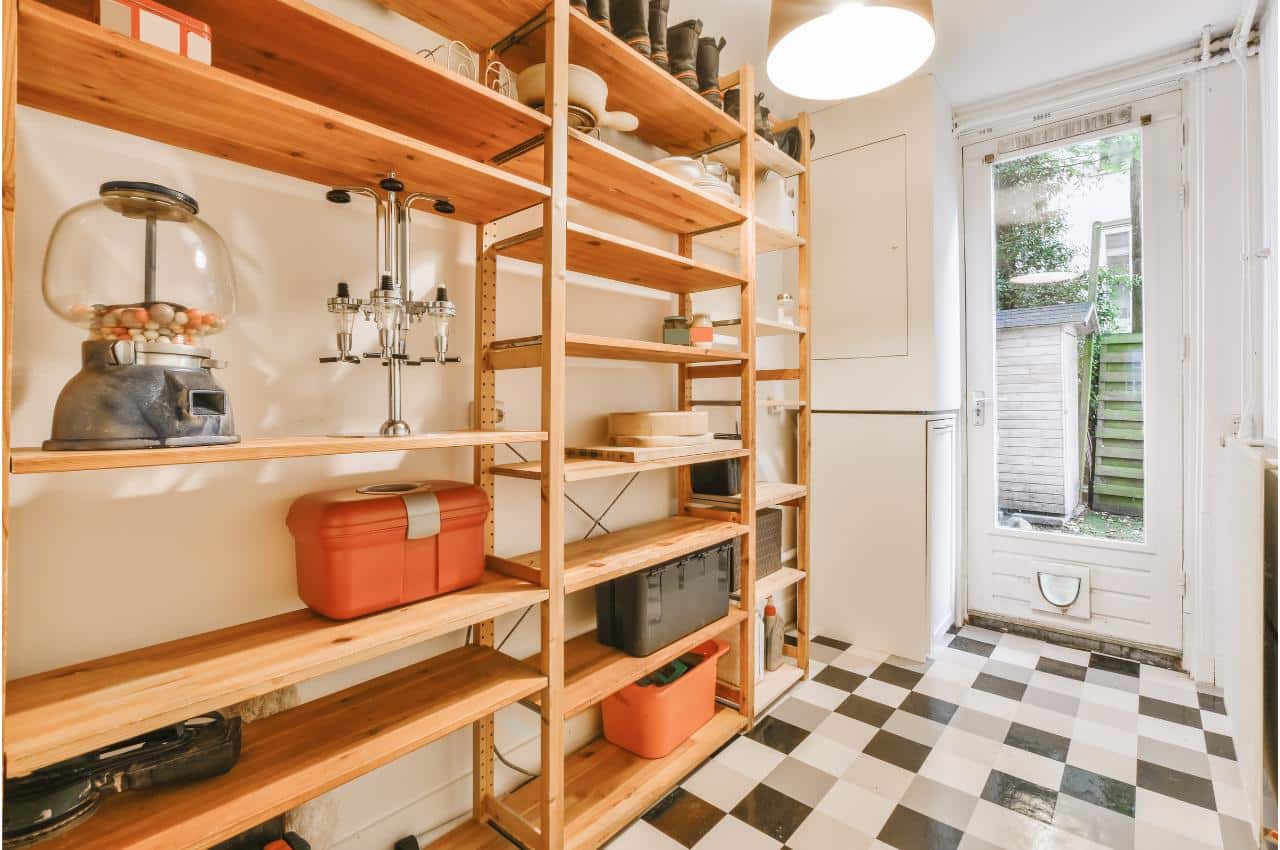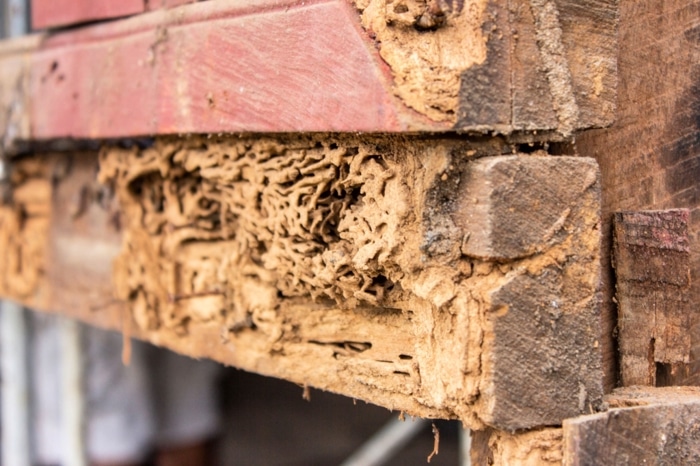Picture this: You’ve just retrieved your belongings from a storage unit, only to discover they are infested with bed bugs. This scenario is not just frustrating but can lead to a full-blown infestation at home. Bed bugs in storage units are a growing concern, often overlooked until it’s too late. This guide delves into the heart of the problem, offering insights and solutions to prevent these pests from turning your storage space into their new home.
Don’t let pests take over your home! Act now and schedule a professional pest control service to get rid of unwanted guests.
Understanding Bed Bugs in Storage Units
Bed bugs, known for their resilience and hitchhiking abilities, find storage units to be ideal hiding spots. These pests thrive in dark, undisturbed areas, making your rarely accessed belongings in storage units a perfect target. Understanding the nature of these pests is crucial. Bed bugs feed on blood, but their ability to survive without feeding for months makes storage units a viable environment for them. They are usually brought into storage spaces through infested items. Once inside, they can quickly multiply, turning a small problem into a widespread infestation.
Storage units vary greatly, from climate-controlled environments to basic garage-like spaces. Regardless of the type, any storage unit can harbour bed bugs if infested items are stored. It’s important to recognize the signs of an infestation: tiny, dark spots (bed bug excrement), shed skins, and the bugs themselves, which are small, flat, and reddish-brown. Regularly inspecting your storage unit and belongings can help in early detection, significantly reducing the risk of a larger problem.

Modern Pest Control, Simplified.
How Long Do Bed Bugs Last in a Storage Unit
The longevity of bed bugs in storage units is alarming. Under optimal conditions, they can live for about 2 to 6 months without feeding. However, in cooler environments, this period can extend significantly. Their lifespan in a storage unit depends on factors like temperature, humidity, and the availability of hiding places. In a climate-controlled unit, where conditions are more stable, bed bugs can survive for a longer period, waiting for their next blood meal.
The resilience of bed bugs in storage units poses a serious challenge. They can remain dormant for months, making it difficult to detect their presence initially. This ability allows them to survive long periods without human hosts, making storage units a potential hotspot for these pests, especially if preventive measures are not taken.
Check out our post about bed bugs.
Can Bed Bugs Live in Storage
Yes, bed bugs can and do live in storage spaces. While they prefer environments where they have regular access to human hosts, their adaptability allows them to survive in less ideal conditions like those found in storage units. This survival is partly due to their ability to enter a semi-hibernation state, slowing their metabolism and conserving energy when a blood meal is not available.
Bed bugs can find numerous hiding spots in storage units, from furniture crevices to boxes of clothes. The clutter commonly found in these units provides ample hiding places, making it easier for bed bugs to go undetected. They can easily hitch a ride into storage units via infested items, such as furniture, mattresses, and clothing, and once inside, they can spread to neighbouring units, increasing the scale of the infestation.
To mitigate this risk, it’s essential to inspect items for signs of bed bugs before placing them in storage. Using protective covers, especially for mattresses and upholstered furniture, can also help. However, these measures alone cannot guarantee prevention, as bed bugs are adept at finding new hiding spots.
Preventative Measures Against Bed Bugs in Storage Spaces
Prevention is key in managing bed bug infestations in storage units. Here are some effective strategies:
Inspect Regularly:
Regular inspections of your storage unit and belongings can help catch an infestation early. Look for signs of bed bugs, such as live insects, shed skins, and black faecal spots.
Clean and Vacuum Belongings:
Before storing items, clean and vacuum them thoroughly. This reduces the chances of unknowingly bringing bed bugs into the storage unit.
Use Protective Covers:
Encase mattresses, box springs, and upholstered furniture in protective covers designed to prevent bed bugs. These covers can also help detect bed bugs early, as they are typically light-coloured, making bugs more visible.
Avoid Clutter:
A cluttered storage unit provides more hiding places for bed bugs. Keeping your unit organised and clutter-free makes it easier to inspect and reduces the number of potential hiding spots.
Climate Control:
If possible, opt for a climate-controlled storage unit. Extreme temperatures, especially cold, can deter bed bug activity.
Seal Cracks and Crevices:
Seal any cracks and crevices in your storage unit. This can prevent bed bugs from migrating from adjacent units or finding hiding places.
Use Pest-Resistant Storage Containers:
Instead of cardboard boxes, use plastic bins with tight-fitting lids. These are less likely to harbour bed bugs and offer better protection against infestation.
Can Bed Bugs Live in Vacuum Sealed Bags
Vacuum sealed bags offer a barrier against bed bugs, but they are not foolproof. While these bags can prevent bed bugs from entering or exiting, if the items inside are already infested, bed bugs can survive within the sealed environment for a considerable time. The lack of air does not significantly affect them, as bed bugs can survive for months without oxygen.
When using vacuum sealed bags for storage, it’s crucial to ensure that the items being sealed are free from bed bugs. Laundering items at high temperatures before sealing can help eliminate any bed bugs or eggs. However, it’s important to inspect the items carefully before sealing, as even a small number of bed bugs can lead to an infestation.
For items that cannot be laundered or heated, such as books or delicate fabrics, consider alternative treatment methods before sealing them. Freezing, for example, can be effective if done for a sufficient duration. It’s also advisable to store vacuum sealed bags away from known infestation areas and to inspect them regularly.
Addressing Roach Infestations in Storage Units
While bed bugs are a significant concern, roaches are another common pest found in storage units. These resilient insects can survive in various environments, including storage units. Roaches are attracted to cardboard, paper, and glue, often found in abundance in storage spaces. They can survive on minimal resources and can even feed on the bindings of books or cardboard boxes.
Preventing roach infestations requires a different approach. Keeping your storage unit clean and free of food debris is crucial. Use plastic bins instead of cardboard boxes, as these offer less appeal to roaches and provide a more secure seal. Regular inspections are also vital. Look for signs of roaches, such as droppings, egg cases, or the insects themselves.
If roaches are detected, prompt action is necessary. Over-the-counter roach traps and baits can be effective for small infestations. However, for more significant problems or persistent infestations, professional pest control services are recommended. Pest Share offers targeted solutions for roach control, ensuring your storage unit remains free of these unwanted guests.
Pest Control for Storage Units

Professional pest control services, like those offered by Pest Share, are an essential tool in managing pests in storage units. These services provide several advantages over DIY methods:
Expertise:
Professionals have the knowledge and experience to identify different types of pest infestations and the most effective treatments.
Comprehensive Solutions:
Pest Share offers comprehensive solutions that address not only the pests you can see but also those hidden away. This includes treatment for bed bugs, roaches, and other common storage pests.
Preventive Strategies:
Along with treating current infestations, professional services can offer advice and solutions for preventing future problems. This includes guidance on how to properly store items to reduce the risk of pest infestations.
Safe and Effective Treatments:
Professional pest control services use treatments that are safe for your stored items but effective against pests. This balance is crucial in a storage setting.
Regular Inspections and Maintenance:
Ongoing inspections and maintenance can catch early signs of infestation, making treatment more manageable and less costly.
Customised Plans:
Pest Share can create a customised plan based on the specific needs of your storage unit, considering factors like size, contents, and existing pest issues.
Identifying Storage Bugs
Knowing what pests you’re dealing with is essential for effective control. Aside from bed bugs and roaches, several other common bugs can be found in storage units. These include:
Silverfish:
These are small, silver or grey insects known for their love of starches and can damage books, wallpaper, and clothing.
Moths:
Particularly clothing and pantry moths, can be a nuisance, damaging fabrics and stored food items.
Spiders:
While often harmless, their presence can indicate other pest infestations they prey on.
Rodents:
Mice and rats can sometimes find their way into storage units, causing damage and potentially spreading disease.
Identifying these pests involves looking for physical signs of their presence, such as droppings, webs, or damage to stored items. Regular monitoring and inspections can help in early detection, making management and eradication more straightforward.
Solutions and Recommendations
To safeguard your storage unit against a variety of pests, consider these recommendations:
Maintain Cleanliness:
Regular cleaning and decluttering can significantly reduce the risk of pest infestations.
Use Airtight Containers:
Store items in airtight containers, particularly for fabrics and food-related items.
Regular Inspections:
Conduct thorough inspections of your unit periodically. This is crucial for early detection and control of pests.
Pest-Proof Your Unit:
Seal any gaps or cracks and consider using natural deterrents like peppermint oil or cedar blocks.
Professional Pest Control Services:
For comprehensive protection, consider scheduling regular inspections and treatments with a professional service like Pest Share.
With these measures, you can create an environment in your storage unit that is less inviting to pests, thereby protecting your belongings.
Conclusion
Dealing with pests in storage units can be a challenging and frustrating experience. However, with the right knowledge and tools, it is possible to protect your belongings and maintain a pest-free environment. Regular inspections, cleanliness, proper storage practices, and the occasional help of professional services like Pest Share are key to keeping your storage space safe and secure. Remember, it’s always better to be proactive than reactive when it comes to pest control. If you’re facing persistent pest issues or want to ensure your storage unit stays pest-free, reach out to Pest Share for expert assistance and peace of mind.





